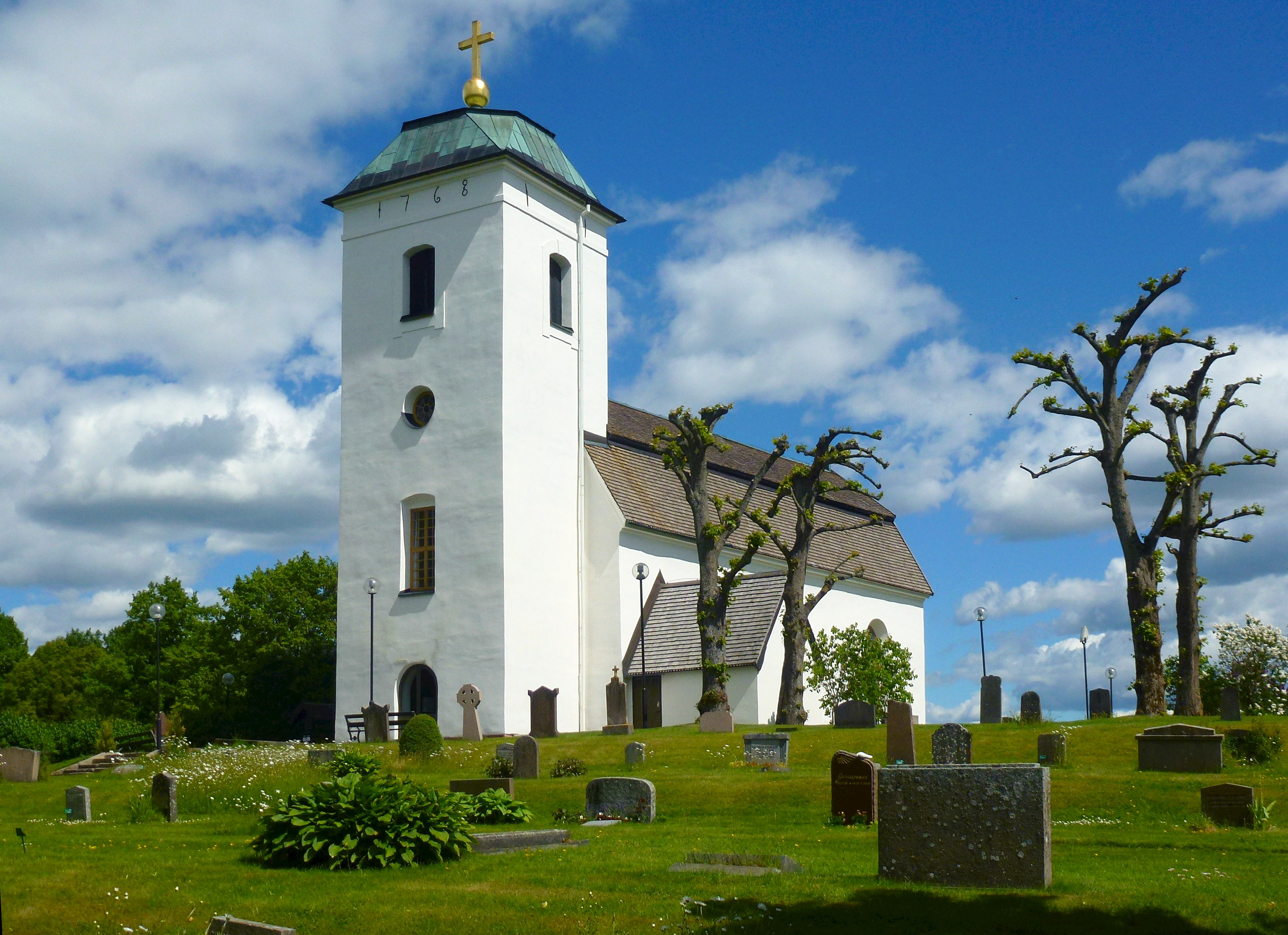Ed Church, Uppland on:
[Wikipedia]
[Google]
[Amazon]
 Ed Church ( sv, Eds kyrka) is a
Ed Church ( sv, Eds kyrka) is a
 Ed Church ( sv, Eds kyrka) is a
Ed Church ( sv, Eds kyrka) is a Lutheran
Lutheranism is one of the largest branches of Protestantism, identifying primarily with the theology of Martin Luther, the 16th-century German monk and Protestant Reformers, reformer whose efforts to reform the theology and practice of the Cathol ...
church about 3 km southwest of the centre of Upplands Väsby
Upplands Väsby () is a locality and the seat of Upplands Väsby Municipality, Stockholm County, Sweden with 149,463 inhabitants in 2020.
History
The municipality has a long history with clear traces of settlements from the pre-Christian times ...
, Stockholm County, Sweden. It belongs to the Diocese of Stockholm. It is a listed building
In the United Kingdom, a listed building or listed structure is one that has been placed on one of the four statutory lists maintained by Historic England in England, Historic Environment Scotland in Scotland, in Wales, and the Northern Irel ...
, protected by law.
History and architecture
Construction of the church started in the 12th century, and it was expanded during the 14th and 15th centuries. In 1487, the interior of the church was decorated with frescos byAlbertus Pictor
Albertus Pictor (English, "Albert the Painter"; Immenhusen, c. 1440 – c. 1507), also called Albert Pictor, Albert Målare and Albrekt Pärlstickare (Swedish), is the most famous late medieval Swedish painter, known for his wallpaintings survivi ...
. During Catholic times, the church was dedicated to Saint Olaf
Olaf II Haraldsson ( – 29 July 1030), later known as Saint Olaf (and traditionally as St. Olave), was King of Norway from 1015 to 1028. Son of Harald Grenske, a petty king in Vestfold, Norway, he was posthumously given the title '' Rex Per ...
.
Reconstruction works were carried out in 1768. The tower was made higher, the windows enlarged and several medieval elements removed. The frescos were covered with whitewash
Whitewash, or calcimine, kalsomine, calsomine, or lime paint is a type of paint made from slaked lime (calcium hydroxide, Ca(OH)2) or chalk calcium carbonate, (CaCO3), sometimes known as "whiting". Various other additives are sometimes used.
...
. Architect Jean Eric Rehn
Jean Eric Rehn (18 May 1717, Stockholm - 19 May 1793, Stockholm) was a Swedish architect, engraver and designer.
Biography
His father, Eric, was a government ombudsman for the Sámi people. While still a boy, he became part of the , a forerunne ...
designed parts of the new interior elements, notably the pulpit. The reconstruction was supported by Charles De Geer
Baron Charles de Geer (the family is usually known as De Geer with a capitalized "De" and is pronounced "de yer"); Finspång in Risinge 30 January 1720 – Stockholm 7 March 1778) was a Swedish industrialist and entomologist.
Life
De Geer, w ...
, who also supported reconstruction works at nearby Hammarby and Fresta churches. The external similarities between Fresta and Ed churches are striking.
A renovation was made in 1917-18 by architect Sigurd Curman, who at the time lived in the parish. He uncovered the medieval frescos and commissioned artist Olle Hjortzberg
Gustaf Olof (Olle) Hjortzberg (14 November 1872 – 8 March 1959) was a Swedish painter and illustrator. He is remembered above all for contributing to the revival of wall paintings in Swedish churches.
Biography
Born in Stockholm, Hjortzberg w ...
to make additional frescos for the 18th-century vaults. Hjortzberg also designed the new stained glass windows.
References
External links
* {{Churches in Uppland Buildings and structures in Stockholm County Churches in the Diocese of Stockholm (Church of Sweden) Churches converted from the Roman Catholic Church to the Church of Sweden